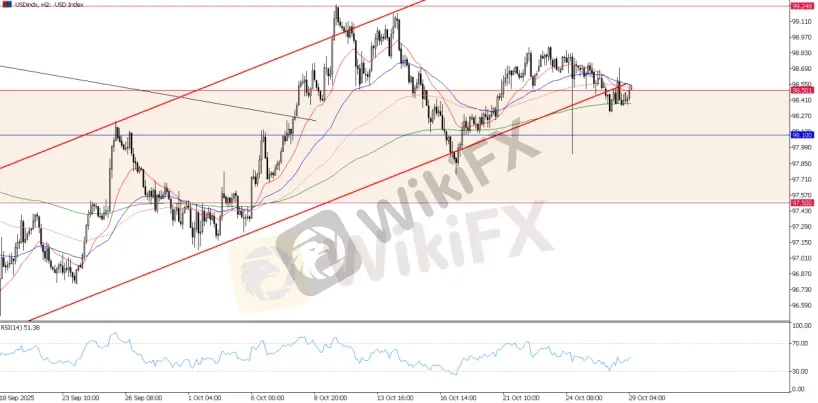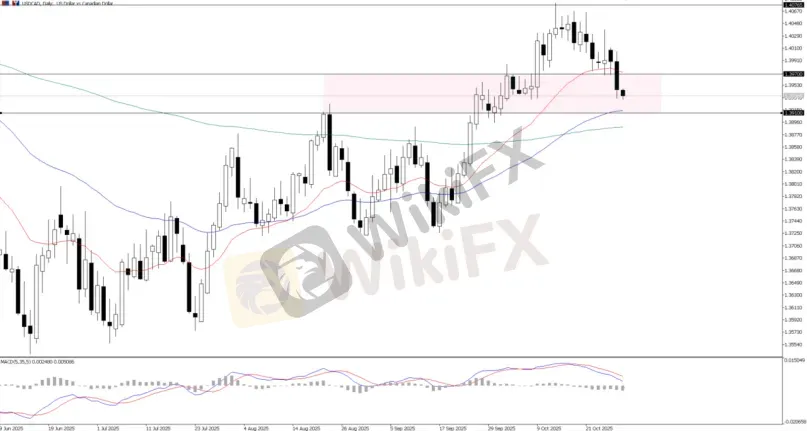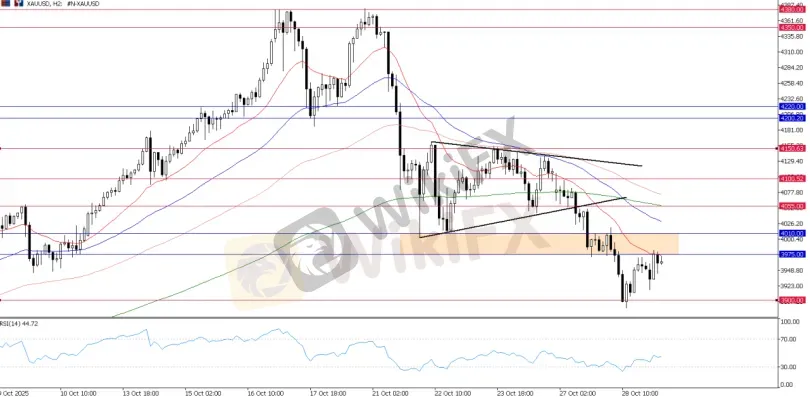简体中文
繁體中文
English
Pусский
日本語
ภาษาไทย
Tiếng Việt
Bahasa Indonesia
Español
हिन्दी
Filippiiniläinen
Français
Deutsch
Português
Türkçe
한국어
العربية
DBG Markets: Market Report for Oct 29, 2025
Zusammenfassung:Markets Brace for Dual Rate Decisions: FOMC Set Stage for Market MovesGlobal risk assets continued to climb on Tuesday, fuelled by strong AI optimism and upbeat financial headlines. The three major U.
Markets Brace for Dual Rate Decisions: FOMC Set Stage for Market Moves
Global risk assets continued to climb on Tuesday, fuelled by strong AI optimism and upbeat financial headlines. The three major U.S. indices hit fresh record highs for a third straight session, led by a nearly 5% surge in Nvidia, while Microsofts market capitalization briefly approached the $4 trillion mark. Asian, A-share, and Hong Kong markets also advanced in tandem.
Investor attention is now firmly centered on the dual rate decisions from North America, which will set the tone for the U.S. Dollar and Canadian Dollar heading into year-end.
· The two-day Federal Reserve FOMC meeting concludes today, with the policy decision and forward guidance due shortly.
· Meanwhile, the Bank of Canada is set to announce its own rate decision ahead of the Fed.
Federal Reserve Preview: Focus on the Guidance, Not Rate
The market is almost unanimously expecting the Fed to deliver a 25-basis-point rate cut, lowering the federal funds target range to 3.75%–4.00%. As such, the spotlight is squarely on Chair Powells forward guidance and liquidity stance.
Volatility is likely to hinge on two key factors:
1. Forward Guidance: Any hints about the policy path into December and 2026 will drive market expectations for the pace of further easing.
2. Quantitative Tightening (QT): Traders will be watching closely for signals of an imminent or near-term halt to balance sheet runoff, which could inject additional liquidity into the system.
The outcome could unfold under two main scenarios:
· Dovish Surprise: If Powell expresses stronger concern over employment and signals an earlier end to QT, the U.S. Dollar could weaken sharply while equities and gold rally.
· Hawkish Surprise: If Powell highlights persistent inflation risks and avoids committing to further easing, markets may react negatively, triggering an equity pullback and renewed USD strength.
US Dollar Outlook
The U.S. Dollar Index is trading in a tight range between 98.50–98.70, reflecting a cautious tone ahead of the FOMC decision. This consolidation suggests the market is in “wait-and-see” mode before a potentially sharp policy-driven move.

USD Index, H2 Chart
The 98.50–99.00 zone remains the key technical battleground:
· Downside Risk: A decisive break below 98.50 — especially if driven by a dovish Fed — would confirm renewed bearish momentum and could push the DXY toward 97.50.
· Upside Potential: Sustained strength above 98.50 could open the door for a test of 99.00, with a breakout signaling recovery in dollar sentiment.
Bank of Canada: Sluggish Growth Reinforce More Easing
The Bank of Canada (BoC) is widely expected to deliver another 25-basis-point rate cut today, lowering its policy rate to 2.25% as policymakers seek to cushion the economy against U.S. tariff risks and weak domestic growth. Having already reduced rates multiple times this year, the BoC remains firmly accommodative, prioritizing support for employment and trade resilience over moderate inflation concerns.
CAD Volatility Outlook
Market reaction will hinge on the BoCs forward guidance. Should policymakers hint that this is likely the final cut of the year, the Canadian Dollar (CAD) could see a short-term rebound.
However, if the Bank signals openness to further easing into late 2025 — particularly in response to deteriorating trade conditions — CAD weakness may deepen, pushing USD/CAD higher— particularly in response to escalating trade tensions — the CAD is likely to weaken sharply, sending USD/CAD higher.

USDCAD, Daily Chart
USD/CAD has recently eased amid broad U.S. Dollar softness on dovish Fed expectations. While the BoC‘s decision could add volatility, the pair’s broader direction remains driven by the U.S. Dollar.
Gold: Corrective Phase Nears Decision Point
Gold‘s recent sharp pullback came as investors took profits and unwound positions built on geopolitical risk. Now, the metal sits at a crucial turning point, with the Federal Reserve’s policy decision likely to determine whether the correction ends or extends further.
The outlook for Gold largely depends on whether the Fed delivers a clearly dovish message, which would directly influence the two key drivers: the U.S. Dollar and real yields.
· Dollar Weakness (DXY): Gold is priced in U.S. Dollars, so a dovish Fed — through rate cuts or slower balance sheet tightening — usually weakens the dollar. A weaker dollar makes Gold cheaper for global buyers and often leads to renewed buying interest.
· Falling Real Yields: Lower rates and still-high inflation (around 3.0% CPI) push real yields down. Since Gold doesnt earn interest, falling real yields make it more attractive compared to holding low-yield bonds.

XAU/USD, H2 Chart
Technically, gold has broken below the key $4,000 level but is now finding support near $3,900 — a crucial zone that could determine whether the current sell-off stabilizes. The Feds policy decision later today will likely decide if this area becomes a near-term bottom.
Haftungsausschluss:
Die Ansichten in diesem Artikel stellen nur die persönlichen Ansichten des Autors dar und stellen keine Anlageberatung der Plattform dar. Diese Plattform übernimmt keine Garantie für die Richtigkeit, Vollständigkeit und Aktualität der Artikelinformationen und haftet auch nicht für Verluste, die durch die Nutzung oder das Vertrauen der Artikelinformationen verursacht werden.
WikiFX-Broker
Aktuelle Nachrichten
XRP: Was Ripple dir JETZT nicht offen sagt
Oracles Kurssturz ist ein weiteres Warnsignal für KI-Investoren
Solana vor möglichem Ausbruch: ETF-Zuflüsse stützen Kurs über 131 Dollar
Cardano stabilisiert sich über 0,40 Dollar – Indikatoren nähren Hoffnungen auf Ausbruch
Wechselkursberechnung



